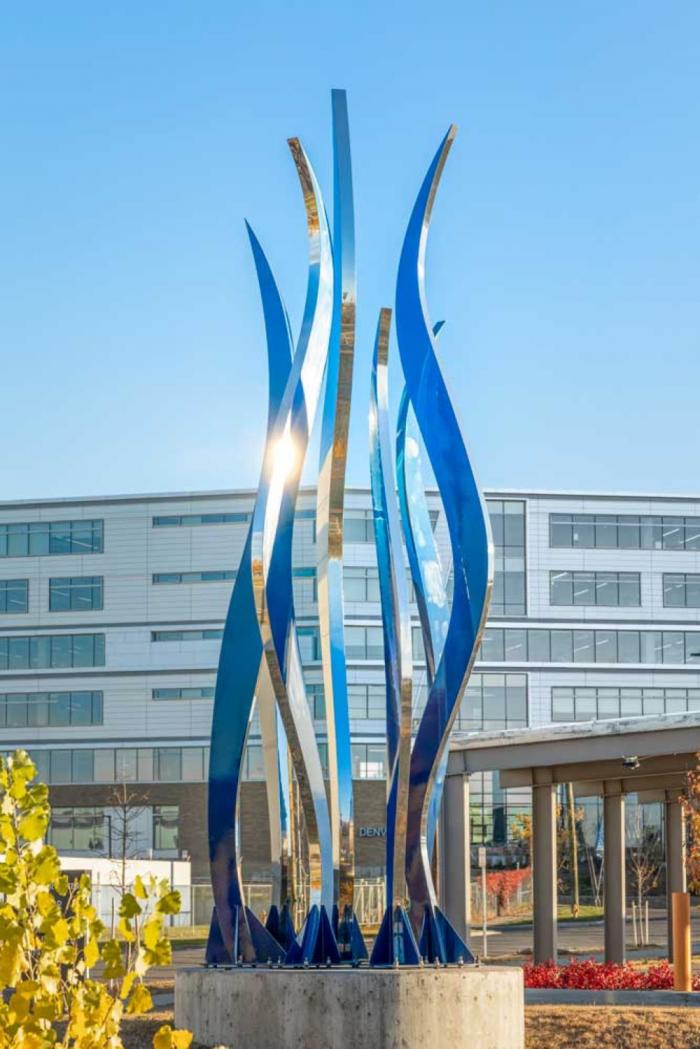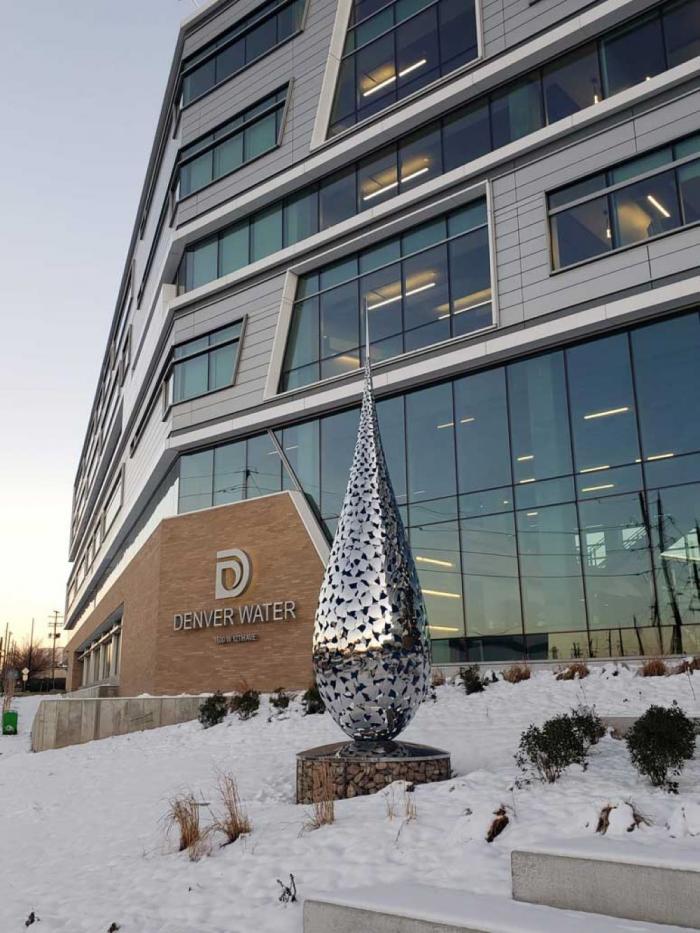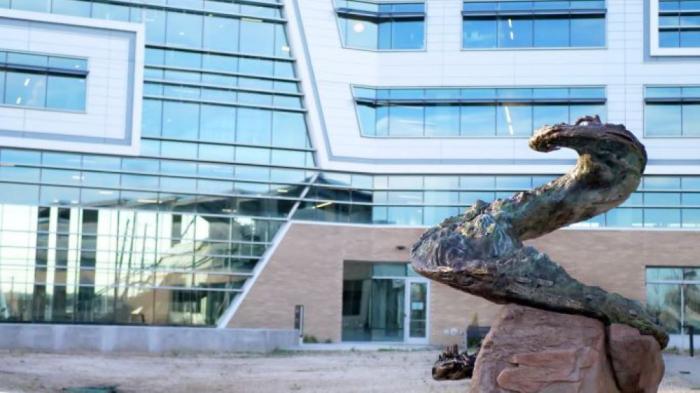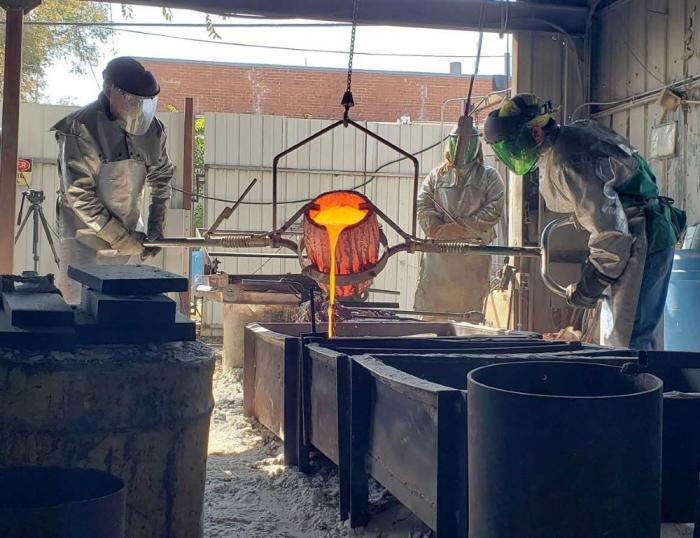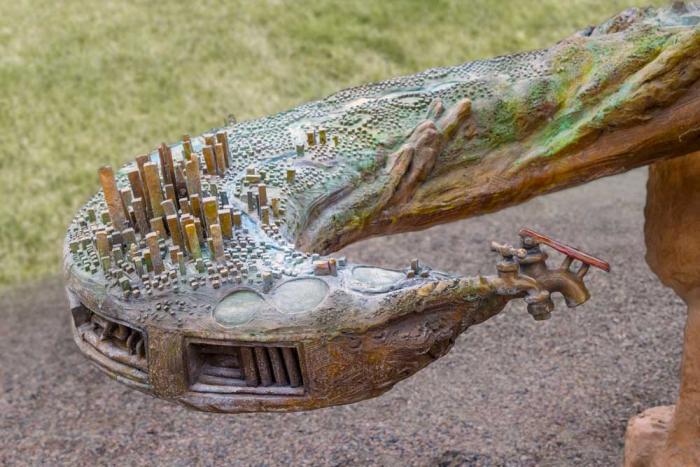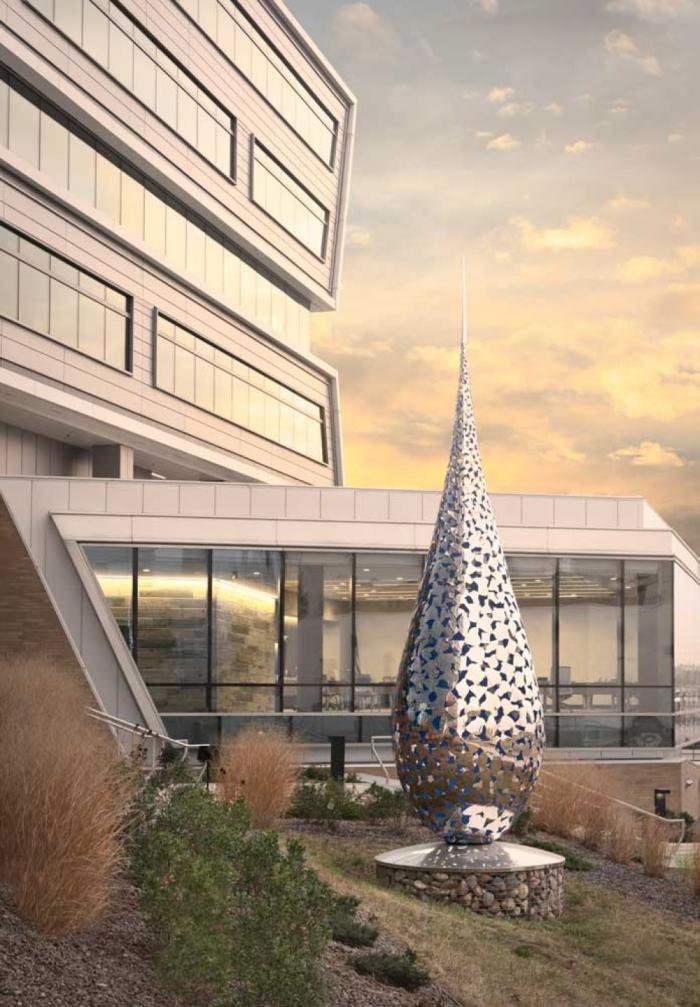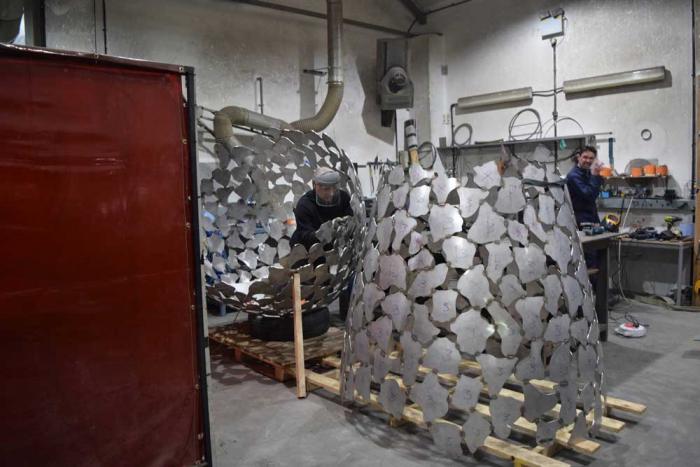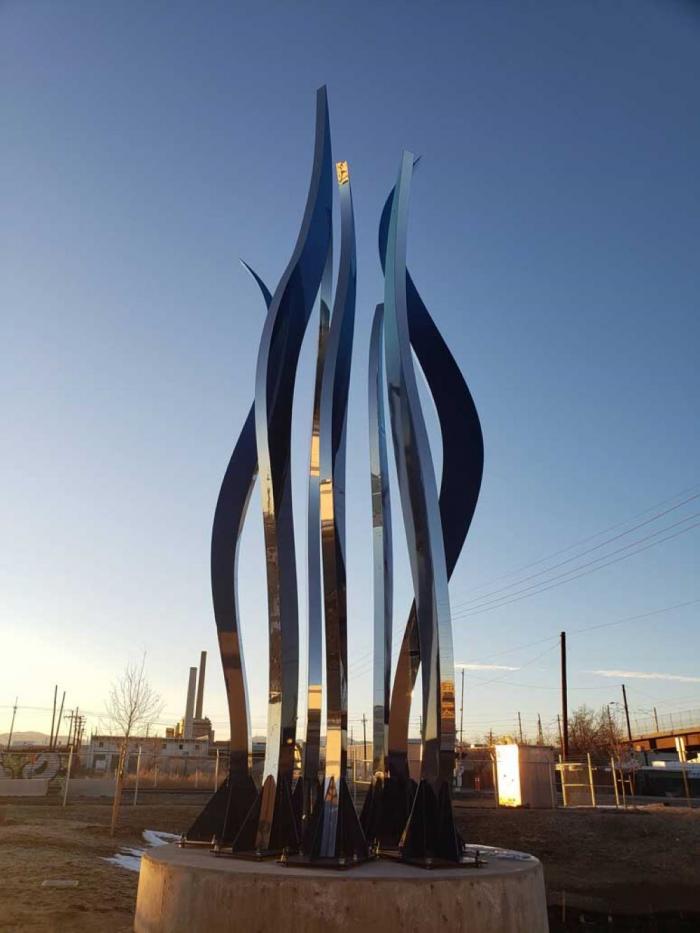Celebrating water in all its forms
Splashing. Dropping. Flowing.
Meandering. Pouring. Pooling.
Water is ever changing and changing everything around it.
Cities grow where rivers meet. Drops — one following another — carve canyons.
And different aspects of water can be found in three public art pieces commissioned by Denver Water as part of the redevelopment of its 35-acre Operations Complex.
The multiyear project replaced aging buildings, in one case 130 years old, and made the complex more operationally efficient, publicly accessible and as sustainable as possible.
“These art pieces are very different, and were made using very different processes, but all three pieces — Forests to Faucets, the Droplet and the Hydra — represent different elements of Denver Water and the water that supports our city,” said Jessica Kirk, a Denver Water marketing specialist who helped guide the selection process.
See Denver Water employees create fish, birds and other elements of the Forests to Faucets sculpture.
A Denver Water committee selected three pieces by two artists, Rik Sargant, a local artist and whose work can be seen around Denver, and David Harber, who is based in the United Kingdom and whose pieces can be found around the world. The sculptures were installed in fall 2020.
The two artists were among several that Denver-based art consultants and curators NINE dot ARTS brought before the Denver Water selection committee, said Molly Casey, NINE dot ARTS’ chief curator and co-founder.
“This was a great project because we were able to bring in Rik, an amazing, talented local artist who knows Denver so well, and then we also had David Harber, an internationally known artist whose work we could bring to Denver,” Casey said.
Harber’s Hydra is located at the corner of West 13th Avenue and Shoshone Street, at the entrance to Denver Water’s Operations Complex. His Droplet is at the entrance to the new Administration Building.
Sargent’s Forests to Faucets is in the courtyard between the Administration Building and the utility’s historic Three Stones building.
“With Hydra, you get that ‘Wow’ moment that you’ve arrived at Denver Water, with its inspiring look and monumental size,” Casey said.
“Then you travel past it down the sidewalk and you see the Droplet right next to the Denver Water signs on the building. And Rik’s Forests to Faucets piece shows the entire trip that water takes down the mountains all the way to Denver. I’m overjoyed to see all three of these come to life and installed, telling the story of Denver Water,” she said.
Each artist brought years of experience and their own relationship with water to the project.
Sargent used a “lost wax” method developed by Chinese artists more than 6,000 years ago to create Forests to Faucets, a curving, bronze spiral that depicts the mountains at the top and the city’s homes and skyscrapers at its base.
“I want people to look at it and see the rivers become part of Denver Water’s system, and to remember that it’s one of the great systems of the world,” Sargent said.
“When you turn on the faucet, you have clean water to drink. And I’m so grateful for all of the work that goes into getting that clean water to our homes.”
Sargent started the piece in his studio near Denver Water’s Operations Complex, inviting the utility’s employees (before the COVID-19 pandemic began) to take part by creating animals, forests and buildings in the clay version of the sculpture.
From there the sculpture moved through the creation process, with the clay transitioning through wax and plaster before fiery, molten bronze was poured into a mold to cool.
“We broke the mold to free the bronze and fit the pieces into place. Then we did the welding, grinding, polishing and giving the metal a colored patina until it was ready to go to its new home at Denver Water, where people can see the story of water for the next 100 years,” Sargent said.
Where Sargent’s work drew on thousands of years of creative history, David Harber’s studio in the United Kingdom used computer-guided lasers to precision cut the pieces of what would become the Hydra and the Droplet from sheets of metal.
“I looked at the essence of Denver Water, and wanted to tell that story in a beautiful, simple and elegant way,” Harber said.
Harber has worked as an artist for nearly three decades, focusing on elemental metal shapes. In 2016, his studio was honored with the Queens Award for International Trade for outstanding overseas growth while remaining committed to British design and craftsmanship. They received a second Queens Award in 2020.
During Denver Water’s selection process, Harber offered two ideas, hoping one would be picked.
The committee commissioned both of his ideas: The Droplet and the Hydra.
The Droplet is made up of dozens of curved, polished metal pieces that reflect the light during the day and are lit from within at night. It, like the Hydra, with its curving shape mimicking reeds of grass in water or the meandering path of a river, is made of marine grade stainless steel that’s resistant to corrosion.
“I draw up the shapes that we want, then the scans are digitized, and the steel is cut with a laser so that it comes back exactly the way I drew it up. Then we lay out the pieces and start welding — miles and miles of welding,” Harber said.
“I use the image of water a lot in my sculptures,” Harber said. “I get inspired by the light on water, it’s reflective nature. It’s the stuff of life. Nothing happens anywhere without water — and without it, there is nothing.”


